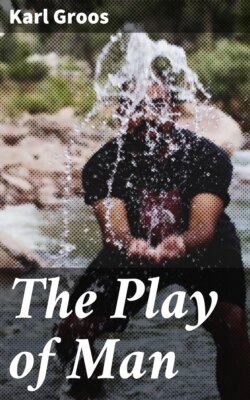Читать книгу The Play of Man - Karl Groos - Страница 17
На сайте Литреса книга снята с продажи.
6. Sensations of Sight
ОглавлениеTurning his face toward the light is about the only manifestation of sight sensation displayed by the infant during his first few days. Many young animals find themselves very much at home in the outer world as soon as they are born, but such is not the case with a child. He must attain to a clear perception of external objects by toilsome experimentation, which commonly requires about five months for its completion, though the fifth week as well as the fifth month marks an epoch in the practice of sight. “The average time is about the fifth week,” says Raehlmann, “when the capacity to ‘fix’ an object is attained—that is, to take cognizance of the retinal picture of what comes within the line of his vision, as it is thrown on the macula lutea. About this time, too, the eye movements, which till then are not definitely co-ordinated, become regulated, while associated movements, such as elevating and depressing the line of vision (the latter somewhat later than the former), also appear. … But movements for the purpose of directly subjecting to fixation objects which lie in the periphery of the field of vision are entirely wanting at this period. The second epoch, that at five months, is marked by the development of orientation in the field of vision. At this time begin actual glancing movements, which shift the line of vision and bring peripheral retinal images on to the macula lutea. Contemporaneously with this, a definite system of innervations is established, especially for those muscles which are employed in shifting the line of vision. Secondly, the winking reflex is perfected by the approach of objects from the periphery of the field of vision. Thirdly, at this time the first experiments in touch controlled by sight are instituted, and serve to bring tactile perceptions into relation with those of sight. The interval between birth and the fifth week, as well as that from this time to the fifth month, is employed in the acquirement of such sense perceptions as react collectively on the organ and commit it to special uses and control. So, on the authority of repeated experience, whatever is unsuitable is gradually excluded, and only those eye movements are retained which further the proper convergence of the two retinal images.”104 Of course, the power of vision is by no means completely developed at five months, though the technique of the function, so to speak, is by that time essentially perfected. Now begin the real tasks of visual practice: acquiring familiarity with external objects, imprinting the visual images on the mind, and widening the scope of association. On entering the subject of child’s play which is connected with vision it is evident that there are four points for us to keep in mind—brightness, colour, form, and movement. The inner images and concepts, which go hand in hand with such perception (especially with the notion of movement), do not, so far as I can see, form part of our study, since while an effect of the highest importance they do not constitute one of the objects of play.105
